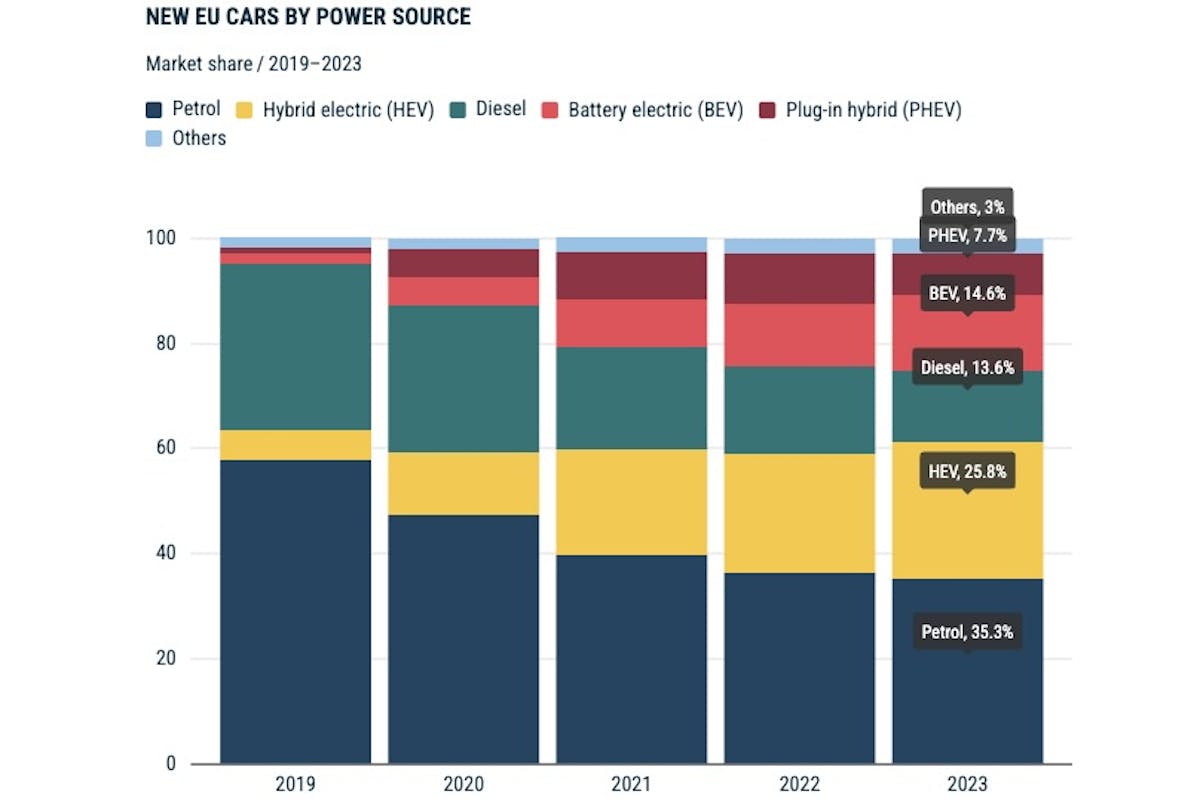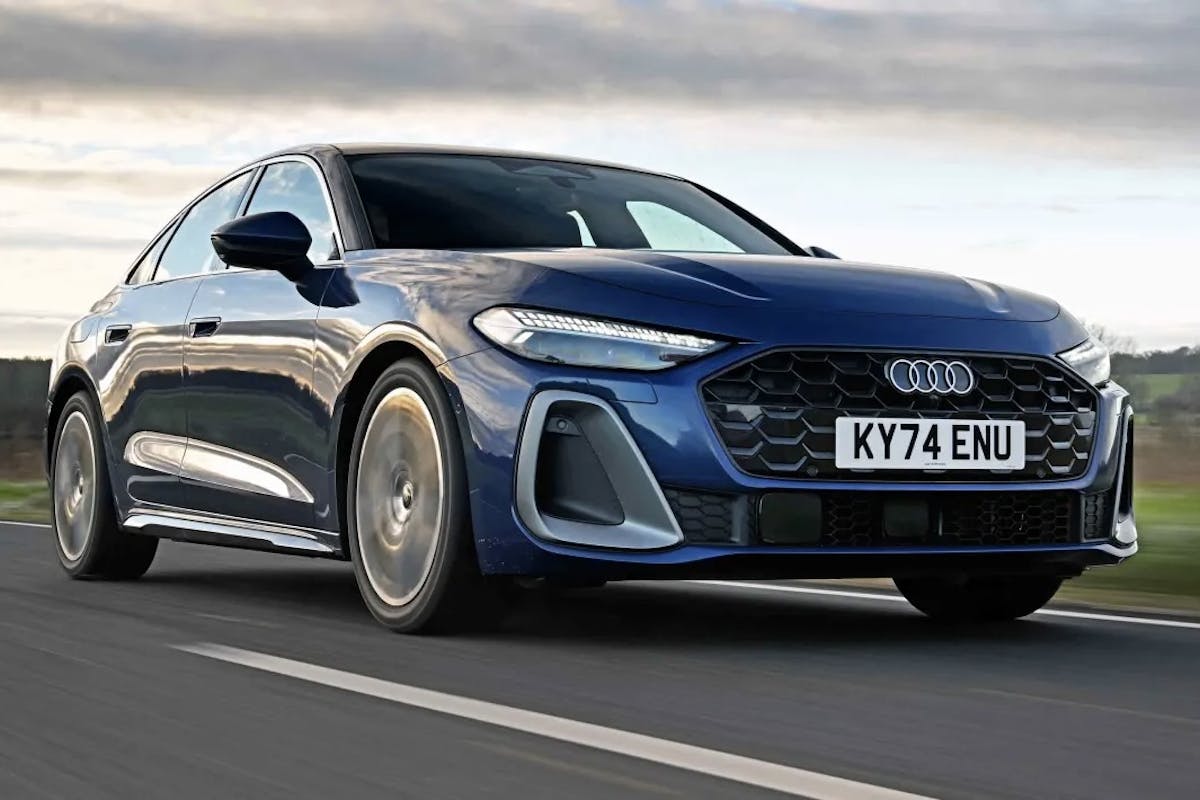Diesel’s superior energy density helps make it the fuel of choice for drivers around the world. Doesn’t matter whether it’s a commercial trucks or a compact hatchback, diesel reigns supreme… Or at least it used to. While diesel cars in the US were largely killed in the Dieselgate scandal, the segment lives on overseas.
So, what exactly is going on with these overseas diesel cars? Are they any good? What varieties of cars are offered with diesel engines? Do people buy them? We’ll answer these questions and more.

What Cars Come With Diesel Engines?
Recently, Auto Express published “Best diesel cars 2025”, sharing a healthy range of vehicles from entry level compacts to SUVs and refined luxury sedans offered in the European market. Sitting proudly atop the list is the £30,000 ($34,776) 57 mpg Skoda Octavia. It is powered by a 2.0-liter turbocharged direct injected inline four, good for 150 hp at 3,000 RPM and 266 lbft of torque at 1600 RPM.

The Octavia is a practical, efficient, well built sedan with great modern tech, worthy of Auto Express’s 2024 Family Car of the Year award. Essentially, it is just a plain good normal car. Scratch that – the best one, apparently.
Topping Car and Driver’s Best Compact Cars list in the US is the Honda Civic. Honda also wins the Mid-Size Family Sedans category with the Accord. Imagine if either of these prolific vehicles offered a 57 mpg diesel powertrain alongside their gasoline and hybrid options. That is essentially the reality that currently exists in Europe.

Also on Auto Express’s list is the Mercedes S-Class, starting at $116,000 for the S350d and $128,500 for the S450d. It makes 362 hp at a screaming 4,000 RPM and 553 lb-ft at just 1,350 RPM. The S350d makes 308 hp and achieves 39 mpg. The S-Class continues to define the full-size luxury sedan segment, even with its diesel.
Other vehicles on the list of top diesels include solid everyday offerings from VW, Mercedes-Benz, Kia, Skoda, and Land Rover. So, diesel engines are available in many vehicles, mostly designed for carrying people and personal luggage on a paved commute… Do they sell?
Sales Numbers For European Diesels

(Source: European Automobile Manufacturer’ Association)
Statista reports that new diesel-powered passenger cars in Europe fell from 52% of the market in 2015 to 32% in 2019. Figures published in 2024 from the European Automobile Manufacturers’ Association [ACEA] pick up the story, reporting a 27.9% market share in 2020 down to a 13.6% piece of the pie in 2023. Although declining, 13.6% is still a big number. For context, just 7.9% of new cars sold in America are EVs. By 2023 market share percentage, Europeans buy almost twice as many diesels as Americans buy EVs. For now.
What Is The Science On Emissions From Modern Diesel Cars?
A study from The International Council on Clean Transportation compared a 2016 VW Golf TDI to a 2018 VW Golf TSI in lab tests and real world driving tests. They recorded lower carbon dioxide emissions from the gasoline car, 140 to 157 grams per kilometer, versus the TDI’s 148-163 g/km. Further down the article, ICCT writes “the combustion of 1 liter of diesel fuel releases about 13 percent more CO2 than the same amount of gasoline fuel.” This statement is pretty pointless, because that same liter of diesel gets the diesel car at least 13 percent further down the road than the gasoline car. BASF, the German chemical giant, interviewed Professor Thomas Koch, Director of the Institute of Piston Engines at Karlsruche Institute of Technology in Germany, and former Mercedes commercial motor engineer. When asked what the important uses for diesel are going forward, Professor Koch said:
For a standard sedan, the diesel is simply the better drivetrain, with 10-20-percent fewer CO2 emissions in comparison with gasoline and less than a gasoline hybrid … So we need it, that’s the message in brief.

ACEA did their own study in 2018 and found that diesels fell well below the Euro 6d NOx limit. ACEA Secretary General Erik Jonnaert even said:
These new findings prove that modern diesel cars… will play a strong role in helping cities move towards compliance with air quality targets.
It’s fascinating to hear such optimism from officials, compared to the complete abandonment of the segment in the US. There are arguments, and numbers on either side both for and against diesel cars. Either way, they are similar to the pollutant levels from gasoline engines. As long as OEMs continue to produce solid diesel options, and they aren’t killed by policy, diesels will continue fighting on alongside their gasoline counterparts.
Is the EU Killing Diesel Cars?
Europe has a tiered, evolving system for categorizing and measuring a vehicle’s carbon footprint. New versions of the Euro emissions standards release every few years. Euro 6 was implemented in 2014 for light and passenger vehicles, and Euro 7 comes in late 2026. Euro 7 will factor brake and tire wear into a vehicle’s carbon footprint calculation. Below is a graph visually displaying carbon footprint allowed for Euro 1 through 5 emission standards.

While these standards are usually applied to new cars, some regions in Europe are pushing them to cover older vehicles. For example, London has an “Ultra Low Emissions Zone” [ULEZ] which periodically expands its borders and tightens the restrictions on what vehicles are allowed within the area. Drivers of pre-Euro 6 diesels must pay a £12.50 ($17) toll to enter the ULEZ. Combined with the £15 congestion charge, means drivers of ten year old diesels could pay $37.25 just to enter London. Penalties for nonpayment can reach up to an additional £180 ($244). If a ten year old car sounds young to be paying extra to cover emissions, it is. The average car on American roads is 12.5 years old. Meanwhile, the updated ULEZ fee applies to Euro 4 gasoline cars and back, waiving the fee for cars twice the diesels’ age.

Are Buyers Ditching Diesel?
On top of ULEZ fees targeting diesels and other regional policies throughout Europe, the EU aims to end sales of diesel and gasoline powered cars altogether by 2035. Increasingly stringent regulations, and looming major shifts away from ICE cars altogether, push consumers towards EVs. Looking back at ACEA’s graph showing cars sold by powertrain type, you’ll notice gasoline cars have lost an even larger percentage of total market share than diesels, reflecting a general shift away from ICE cars.
You might also like
Launch Harder: New CNC Fabrication Diesel Performance 4-Link Kit
Nothing helps more at the drag strip than a 4-link rear suspension. CNC Fabrication Diesel Performance offers a near bolt-on solution for high-power heavy-duty diesel pickups.


